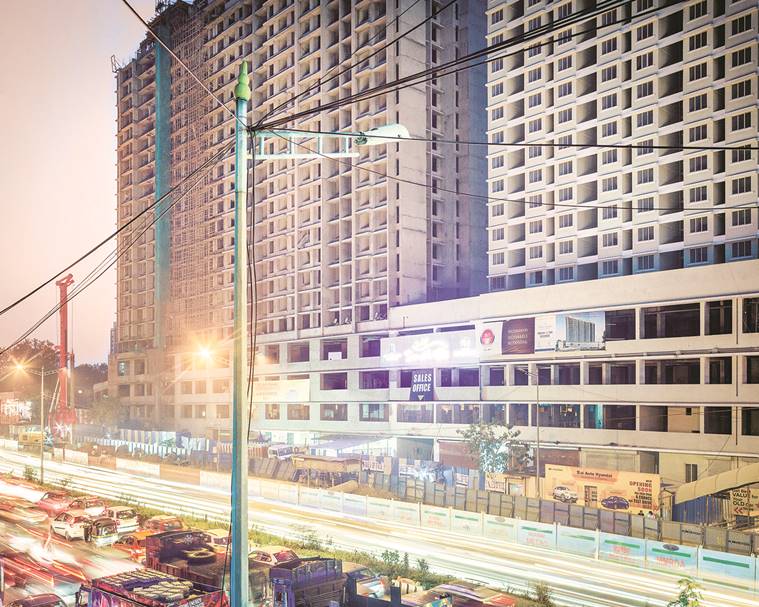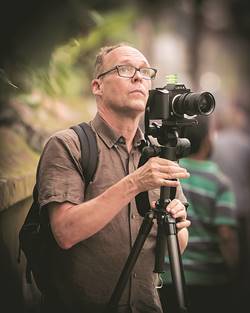The Call of the Sprawl
An exhibition of photographs highlights the urgent crisis of space and resources in Mumbai’s suburbs.

Photograph from the exhibition “Mumbai Suburbia: Urban Environment in Crisis”.
Almost every cliche about Mumbai centres on the fact that this is a city of contrasts — slums versus high rises, glamour versus grime, the vastness of the sea versus the cramped interiors of the local trains. Another great contrast, that Mumbaikars have long become reconciled to, is the sharp contrast between south Mumbai — referred to by most as ‘town’ — and the massive expanse that fans out northwards from the narrow stretch from Dadar in the west to Sion in the east. The bulk of Mumbai’s population lives in these suburbs to the north of the historical city of Bombay, but it has always been the latter that has supplied the most enduring visual representations of the city, from the Gateway of India to the Taj Mahal Hotel to the Chhatrapati Shivaji Maharaj Terminus to Marine Drive — all of which present a view of the city that has long stopped being whole and true.
It’s refreshing then to see a photographic project that seeks to examine what life in suburban Mumbai is like. It was with this in mind that German photographer Peter Bialobrzeski set about on his photographic project in Mumbai. Armed with some light photographic equipment, Bialobrzeski tramped across the suburbs and photographed them, while in the city on a residency initiated by the Goethe-Institut/ Max Mueller Bhavan Mumbai, from October to December 2017.
The photographs are currently on view at Gallery MMB, in the exhibition “Mumbai Suburbia: Urban Environment in Crisis”. The images show a city coming apart at the seams, filled with structures, both planned and unplanned. The manic and all-consuming pace of its life is evident, not from photographs of crowds and traffic, but from the urban detritus in the form of discarded vehicles and building material that is ignored by most. They highlight the urgent crisis of space and resources in a city that refuses to stop growing
or moving.
or moving.
Bialobrzeski’s interest in documenting the suburbs and how they’ve grown into the massive sprawl that they are today comes, he says, from trying to understand how urban spaces are shaped by us. “As far as I know, nobody has ever undertaken a lengthy artistic exploration of Mumbai’s suburbs. So at least it is a contribution to the debate about how cities are shaped by human beings. Of course there are a lot of political, social and cultural reasons why Mumbai’s suburbia is like it is. I have only hints of it. But they’ll become at best part of a discussion as well as a document to later generations (about) the way we are,” he says, over email.
Bialobrzeski has long been preoccupied by how urban environments are formed and has travelled the world in search of subjects through which this preoccupation can be addressed. He began as a photojournalist for a local newspaper in his native city of Wolfsburg in Germany, and is now a regular professor for photography at the University of the Arts in Bremen. His work has won him several awards, including the World Press Photo Award, in 2003 and 2010. Over the last 17 years, he has published 17 books.

Bialobrzeski has travelled to India multiple times, working on the project “XXX Holy-Journey” in which he explored the country’s rich spiritual tapestry, and Kochi Diary, the fifth book in his “City Diary” series. The images from Mumbai will also eventually be published as a book, with an essay by architect Rahul Mehrotra.
The exhibition is on at Gallery MMB in Mumbai till November 22























No hay comentarios:
Publicar un comentario